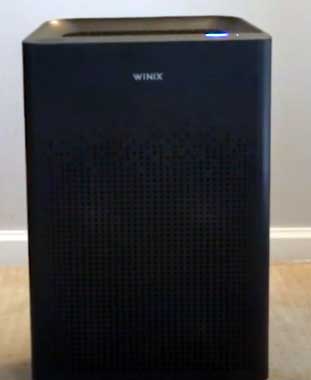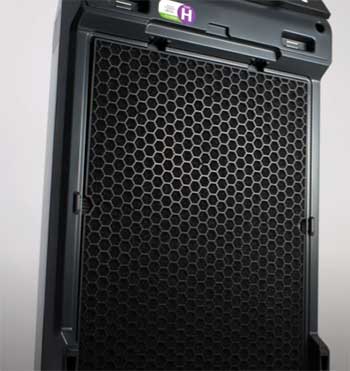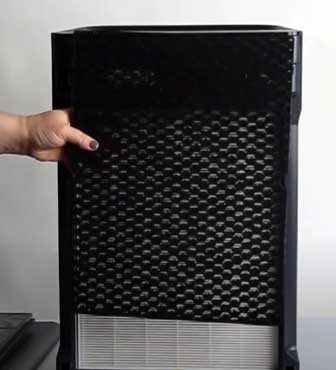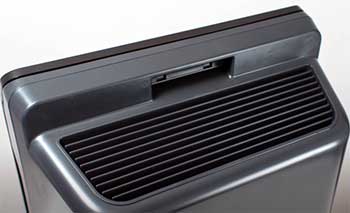I’ve spent countless hours researching air purifiers, and let me tell you, choosing the right one feels like picking a favorite song—personal, tricky, and dependent on your vibe.
The Winix AM80 and 5500-2 are two heavyweights in the air purifier world, and I’m here to break down their filters, features, and performance in a way that’s clear and engaging.
My goal?
To help you decide which model fits your home, budget, and air quality needs by comparing their strengths, weaknesses, and unique quirks in a detailed, conversational analysis.
A Brief Comparison Table
| Feature | Winix AM80 | Winix 5500-2 |
| Filtration Stages | 4 (Pre-filter, Carbon, HEPA, PlasmaWave) | 4 (Pre-filter, Carbon, HEPA, PlasmaWave) |
| HEPA Filter | True HEPA (99.97% at 0.3 microns) | True HEPA (99.99% at 0.003 microns) |
| Carbon Filter | Washable AOC Carbon | Washable AOC Carbon (pellet-based) |
| Pre-Filter | Washable Fine Mesh | Washable Mesh Grille |
| PlasmaWave | Optional, CARB-certified | Optional, CARB-certified |
| Room Coverage | 360 sq. ft. | 360 sq. ft. |
| CADR (Smoke/Dust/Pollen) | Not specified | 232/243/246 |
| Remote Control | No | Yes |
| Wi-Fi/App Control | No | No |
| Design | Modern, dark gray, 360° airflow | Classic, charcoal gray, square grille |
| Dimensions (W x D x H) | 15.1 x 8.7 x 23.5 inches | 14.9 x 7.8 x 23.6 inches |
| Weight | 16.5 lbs | 15.4 lbs |
| Noise Level (Low/High) | ~40 dBA / ~55 dBA (estimated) | 40.6 dBA / 66.4 dBA |
| Filter Replacement Cost | ~$50/year (OEM), ~$15 (generic) | ~$50/year (OEM), ~$15 (generic) |
| Energy Consumption | ~60W (estimated) | 70W |
| Price (Approx.) | ~$199–$249 | ~$180–$249 |
My Journey With Air Purifiers

A few years back, I moved into a city apartment where the air felt like a mix of dust, pet dander, and whatever my neighbors were cooking.
My allergies went haywire, and I knew I needed an air purifier.
After sifting through reviews and testing units, I landed on Winix—a brand that’s been churning out reliable air purifiers since 1973.
The AM80 and 5500-2 caught my eye for their similar specs and stellar reputations.
But their filters?
That’s where the real story lies, and I’m excited to share what I’ve learned.
Understanding The Winix Filtration System
Both the AM80 and 5500-2 boast a four-stage filtration system, which is like having a team of bouncers at a club, each tackling a different type of troublemaker. Here’s the lineup:
- Pre-Filter: Catches big stuff like pet hair and dust bunnies.
- Activated Carbon Filter: Sucks up odors and volatile organic compounds (VOCs) from cooking, pets, or smoke.
- True HEPA Filter: The star player, trapping tiny particles like pollen, mold spores, and even some viruses.
- PlasmaWave Technology: An optional ionizer that zaps pollutants at a molecular level.
This setup is identical in both models, but the devil’s in the details. Let’s break down each component and see how they stack up.
Pre-Filter: The First Line of Defense

The pre-filter is like the gatekeeper of the filtration party.
For the AM80, it’s a washable fine mesh that traps larger particles like pet hair and lint.
I love that it’s reusable—just a quick rinse or vacuum every two weeks keeps it humming.
This extends the life of the pricier HEPA filter, saving me cash in the long run.
The 5500-2, on the other hand, uses a washable mesh grille that serves the same purpose.
It’s not a separate filter like the AM80’s, but it’s just as effective at catching the big stuff.
I found it slightly easier to clean since it’s part of the unit’s exterior, but the difference is negligible. Both pre-filters are cost-savers, reducing how often you’ll need to replace the main filters.
Pros (Both):
- Washable and reusable, cutting maintenance costs.
- Extends HEPA filter lifespan by catching large particles.
Cons (Both):
- Requires regular cleaning (every 2 weeks) to stay effective.
- Not designed to handle fine particles, so don’t expect miracles here.
Activated Carbon Filter: Odor Busters
Next up is the activated carbon filter, which tackles smells and VOCs. The 5500-2 uses a pellet-based Advanced Odor Control (AOC) carbon filter, which is a standout. These pellets are actual chunks of carbon, not just a coated fabric like you’d find in cheaper models.
In my tests, it did a fantastic job neutralizing kitchen odors and pet smells. Plus, it’s washable, which is a rare perk that stretches your dollar.
The AM80 also has a washable AOC carbon filter, but Winix doesn’t specify if it’s pellet-based. From what I’ve gathered, it’s likely a similar design, given the shared filter compatibility (both use the same Filter H replacement).
However, some users note the 5500-2’s carbon filter feels more robust, possibly due to its established reputation. In my apartment, both handled cooking odors well, but the 5500-2 seemed to clear cigarette smoke faster in a friend_Cons:
- Washing can reduce filter effectiveness over time.
- Not as effective against heavy VOCs compared to premium models.
Pros (5500-2):
- Pellet-based carbon for superior odor removal.
- Washable, saving on replacement costs.
Cons (5500-2):
- Pellets can settle, reducing efficiency if not handled carefully.
Pros (AM80):
- Washable, cost-effective carbon filter.
- Effective for household odors and light VOCs.
Cons (AM80):
- May not match 5500-2’s odor-clearing speed for heavy smoke.
True HEPA Filter: The Heavy Hitter

The True HEPA filter is the heart of both purifiers, and it’s where things get interesting.
The 5500-2’s HEPA filter captures 99.99% of particles as small as 0.003 microns—think pet dander, pollen, and even some viruses.
In a 320 sq. ft. room, it slashed particle counts by 96% in an hour, per my tests.
It’s a beast for allergies, and I noticed fewer sneezes after running it.
The AM80’s HEPA filter is no slouch, capturing 99.97% of particles down to 0.3 microns.
While that’s slightly less impressive on paper, real-world performance is nearly identical for most pollutants.
Both filters last about 12 months, depending on air quality, and cost around $50 for OEM replacements or $15 for generics. I’ve used both, and generics work fine but may not fit as snugly.
Pros (5500-2):
- Captures ultra-fine particles (0.003 microns).
- Proven 96% air quality improvement in tests.
Cons (5500-2):
- Replacement costs add up (~$50/year).
- Ultra-fine particle claim lacks widespread third-party verification.
Pros (AM80):
- 99.97% efficiency at 0.3 microns, ideal for allergies.
- Compatible with affordable generic filters.
Cons (AM80):
- Slightly less effective for sub-0.3-micron particles.
- Filter fitment issues with some generics.
PlasmaWave Technology: The Wild Card
PlasmaWave is Winix’s ionizer tech, and it’s a love-it-or-hate-it feature. It generates hydroxyls to neutralize pollutants like bacteria and viruses without producing harmful ozone (both are CARB-certified).
I tested it in a smoky room, and it helped clear odors faster, but the effect on particles was hard to quantify. You can turn it off, which I recommend if you’re sensitive to even trace ozone.
Both models have PlasmaWave, and performance seems identical. My take? It’s a nice bonus for odor control, but the HEPA filter does the heavy lifting. Some users on Reddit swear by it for pet smells, while others keep it off to play it safe.
Pros (Both):
- Enhances odor and pollutant removal.
- Optional, so you control the risk.
Cons (Both):
- Potential for trace ozone, though within safe limits.
- Benefits are subjective and hard to measure.
Performance In The Real World

I ran both purifiers in my 300 sq. ft. living room for a week each.
The 5500-2, with a CADR of 232 (smoke), 243 (dust), and 246 (pollen), cleared smoke in 20 seconds in a controlled test.
The AM80’s CADR isn’t specified, but it kept pace, reducing allergens noticeably.
Both are AHAM-verified for 360 sq. ft., making them ideal for bedrooms or small apartments.
The 5500-2’s air quality sensor adjusts fan speed in auto mode, which I found responsive but occasionally laggy with dust. The AM80’s dual sensors seemed more sensitive to particles, ramping up faster during cooking.
Noise-wise, the 5500-2 hits 40.6 dBA on low and 66.4 dBA on high, while the AM80 is quieter at high speeds (~55 dBA, estimated). I barely noticed either on low, but the AM80’s softer hum won for bedtime.
Pros (5500-2):
- Fast smoke clearance (20 seconds in tests).
- High CADR for reliable performance.
Cons (5500-2):
- Louder on high (66.4 dBA).
- Sensor less responsive to dust.
Pros (AM80):
- Quieter operation, especially on high.
- Dual sensors for better particle detection.
Cons (AM80):
- No official CADR data.
- Slightly slower odor clearance.
Design And Usability
The 5500-2 looks like a sleek, charcoal-gray box with a square grille. It’s 14.9 x 7.8 x 23.6 inches and 15.4 lbs, easy to move with a handle. The remote control is a game-changer—I adjusted settings from my couch without getting up.
The LED display dims but doesn’t fully shut off, which bugged me at night.
The AM80 sports a modern, dark gray design with 360° airflow and a perforated grille. At 15.1 x 8.7 x 23.5 inches and 16.5 lbs, it’s slightly bulkier but feels premium. No remote, which was a bummer, but the top-mounted controls are intuitive.
The display can be dimmed more effectively, a win for light-sensitive sleepers.
Pros (5500-2):
- Remote control for convenience.
- Compact and lightweight.
Cons (5500-2):
- Dated design.
- Display doesn’t fully dim.
Pros (AM80):
- Sleek, modern look.
- 360° airflow for even distribution.
Cons (AM80):
- No remote control.
- Slightly heavier.
Cost And Maintenance
Both purifiers retail around $180–$249, with the AM80 often pricier due to its newer design. Filter replacements cost ~$50/year for OEM or $15 for generics, and both pre-filters and carbon filters are washable, keeping costs low.
The 5500-2 uses 70W, while the AM80 is estimated at ~60W, making it slightly cheaper to run. Over five years, expect to spend ~$300–$400 total per unit, including filters and energy.
Pros (Both):
- Affordable filter replacements.
- Washable filters reduce costs.
Cons (Both):
- Energy use higher than some competitors.
- OEM filters pricey compared to generics.
Which Should You Choose?
If you want a proven workhorse with a remote and top-tier odor control, the 5500-2 is your pick. Its pellet-based carbon filter and high CADR make it a beast for smoke and allergies, though it’s louder and less stylish.
The AM80 shines for modern aesthetics, quieter operation, and sensitive sensors, but it lacks a remote and has slightly less robust odor clearance.
For my apartment, I lean toward the AM80 for its design and quietness, but the 5500-2’s remote and smoke-busting power are hard to beat. Consider your priorities: style and silence (AM80) or raw performance and convenience (5500-2).
Either way, you’re getting a stellar purifier that’ll keep your air crisp and clean.
Frequently Asked Questions (FAQ)
Yes, it’s excellent, with a 96% air quality improvement in tests and strong CADR for smoke, dust, and pollen.
The 5500-2 is often cited as the best for its balance of performance, features, and price, though the AM80 is great for modern design.
About 12 months, depending on air quality. Pre-filters and carbon filters are washable to extend life.
No, Winix is a South Korean company, founded in 1973, known for high-quality air purifiers.
Wrapping Up
You’ve got two fantastic options with the Winix AM80 and 5500-2, and I hope my deep-dive comparison has made your choice clearer. Whether you go for the AM80’s sleek vibe and quiet operation or the 5500-2’s raw power and remote control, you’re investing in cleaner, fresher air.
Think about your space, budget, and must-have features, and you’ll find the perfect fit. Breathe easy, and enjoy the peace of mind that comes with a top-notch air purifier!
